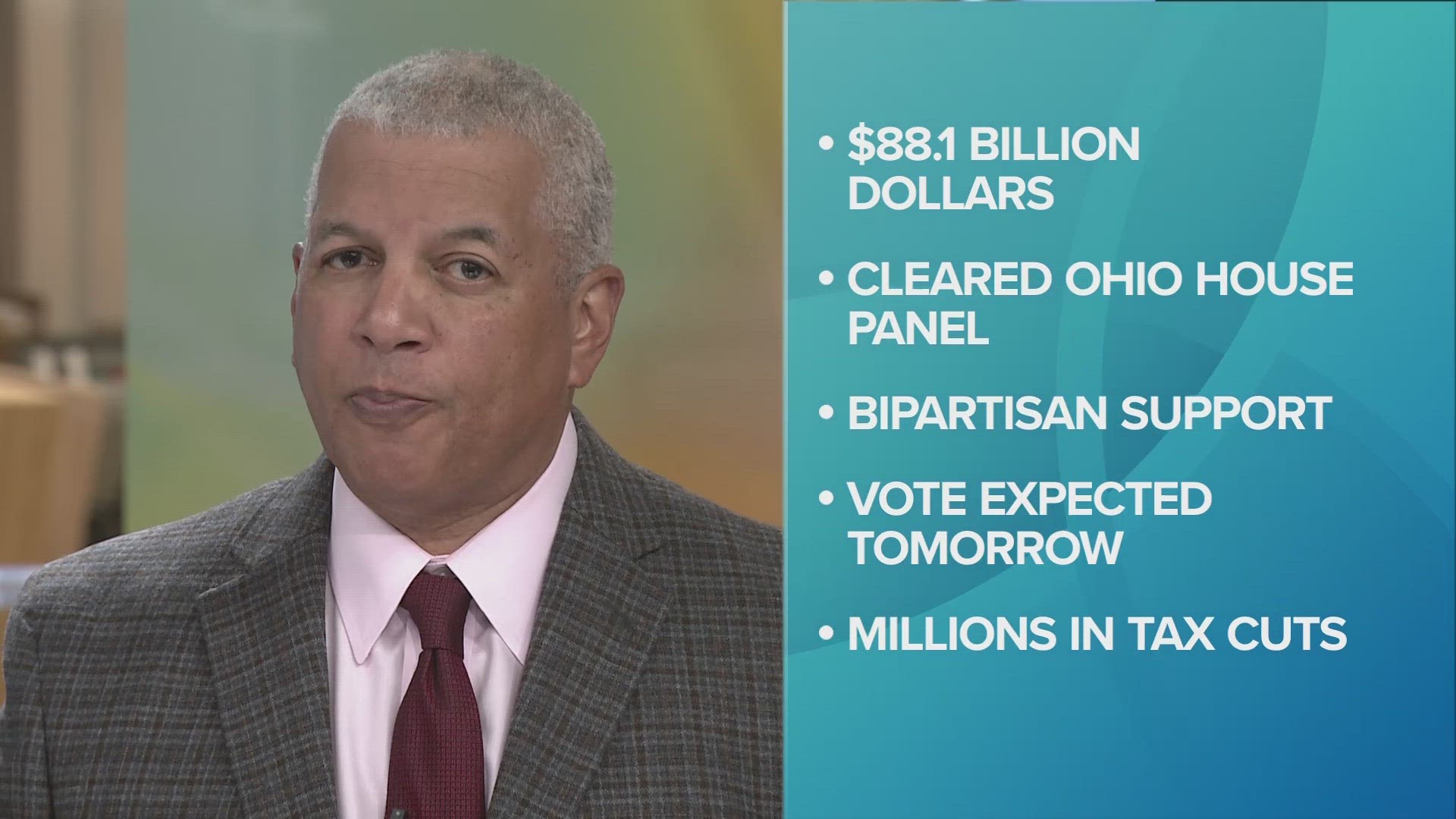COLUMBUS, Ohio — An $88.1 billion state operating budget cleared an Ohio House panel Tuesday with nearly $1 billion in income tax savings that majority Republicans say would help the middle class, increased eligibility for vouchers to help students attend private schools, and provisions to help ensure higher wages for some teachers and health care workers.
The two-year funding proposal passed the House Finance Committee with bipartisan support, and the full Republican-led House is expected to vote on it Wednesday.
House lawmakers' biggest changes to GOP Gov. Mike DeWine's budget proposal included adding nearly $1 billion in income tax savings, according to House majority spokesperson Aaron Mulvey, in part by consolidating the two lowest tax brackets and lowering the rate for that new lowest bracket, to 2.75% for those making between $26,050 and $92,150. They also cut a $2,500 child tax deduction DeWine proposed.
The House version of the budget would continue efforts to implement a fairer, more reliable school funding formula from the last two-year budget, but factor in updated costs for expenses such as teacher salaries, transportation and technology needs, adding another $1 billion-plus to the state's allocations for public education over the next two fiscal years. That’s a win for Democrats, whose priorities for the budget included getting more funding for public schools, said Cleveland-area Rep. Bride Rose Sweeney, the top Democrat on the House Finance Committee.
Additionally, legislators upped eligibility for private school vouchers through the state’s EdChoice scholarship program. The governor proposed expanding eligibility to those at up to 400% of the federal poverty level, or $111,000 for a family of four, while the House plan sets that at 450%, or $135,000 for a family of four.
The House proposal also would require the Ohio Department of Education to conduct a performance comparison study between children at public schools and children participating in EdChoice — a bipartisan measure.
Other education provisions from the House are aimed at stopping students from having to repeat a grade under what's known as the Third Grade Reading Guarantee; calling for a comprehensive study on the needs of “economically disadvantaged students;” and raising the minimum teacher salary from $30,000 to $40,000.
In-home health care workers providing services through Medicaid could also see a wage increase from $16 to $18 under the proposal, something advocates say is desperately needed to boost recruitment into that workforce to meet demand.
The proposal also bans TikTok and other Chinese-owned apps from state computers and other electronic devices, in line with DeWine's earlier executive order on the subject.
House Finance Chair Rep. Jay Edwards, a Nelsonville Republican, said he's satisfied with the way the budget turned out, and that while not everyone on both sides of the aisle is completely happy, the committee “landed in a really good spot.”
While the latest version of the budget maintains much of DeWine’s wish list from his State of the State address, the House nixed several of his proposals, including a ban on flavored tobacco products; a $5,000 scholarship incentive for high school students in the top 5% of their classes to attend in-state universities; making failure to wear a seatbelt a primary offense; and the creation of the State of Ohio Action Resiliency network to conduct studies on mental health of Ohioans.
The House also reduced the All Ohio Future Fund from $2.5 billion to $500 million to invest in large economic development sites across the state.
And the House added a provision aimed at helping survivors of sexual assault and other “sexually oriented” offenses get more access to the information obtained from a rape kit, such as whether DNA was found and whether that DNA matches someone in a state or federal database.
Once it clears the House, the budget would next head to the GOP-led Senate for consideration. Lawmakers must pass it by June 30.

